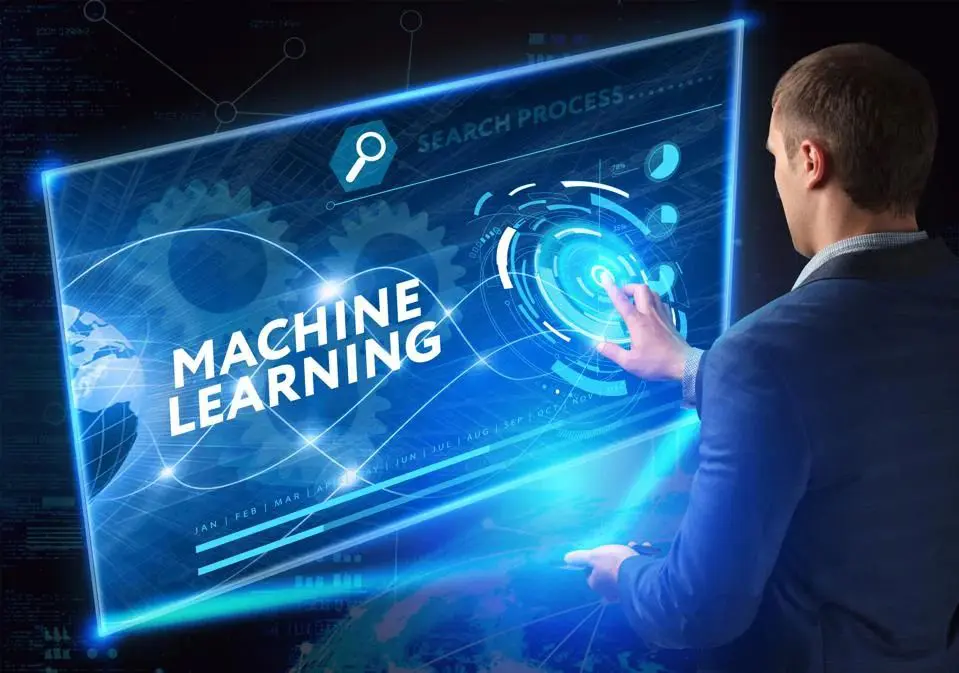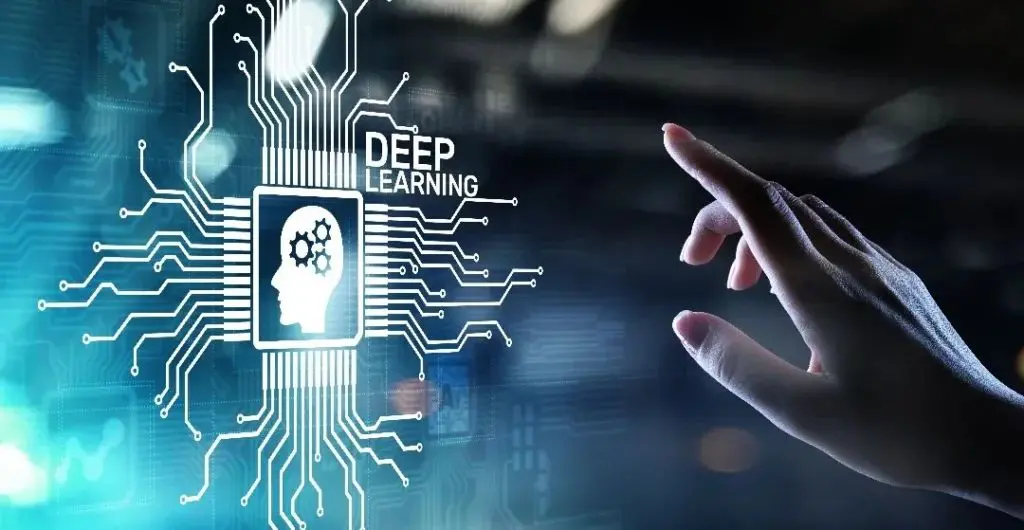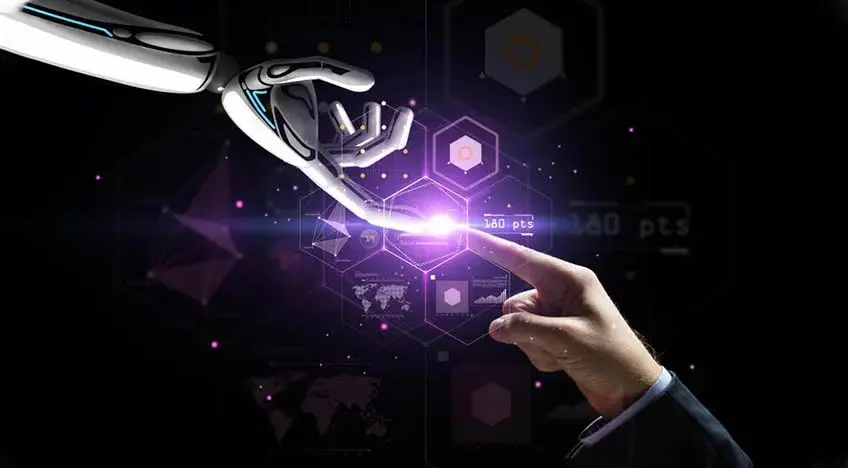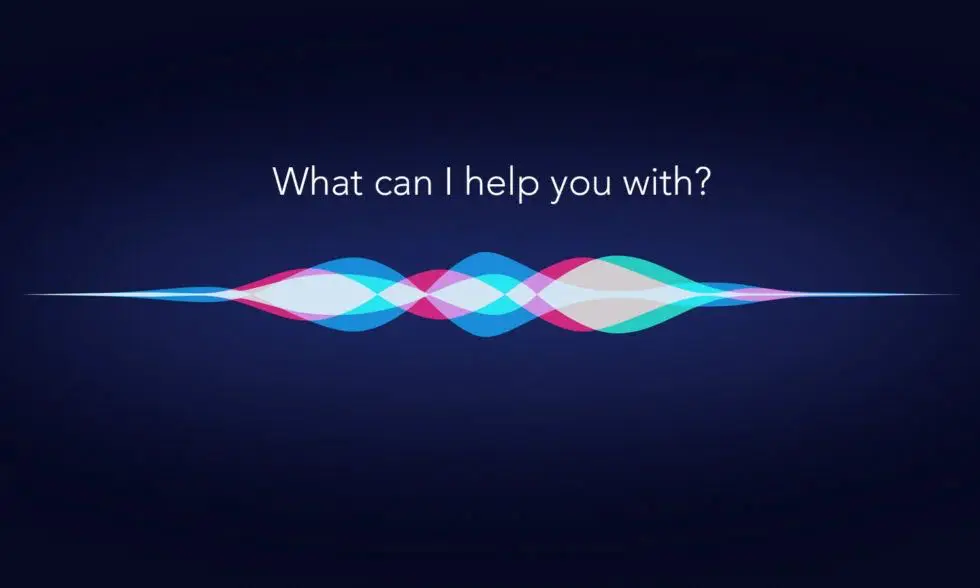The world is evolving more quickly than ever. Every day a new technology is born and makes human life a little easier. Behind bringing this ease is the concept of Machine and deep learning algorithms. They both are classified as subsets of Artificial Intelligence.
This article will give you an in-depth overview of Machine vs. deep learning algorithms and their impact on the future.
What Is Machine Learning?
Machine Learning is a component of Artificial Intelligence (AI) that permits programming applications to become much more precise at foreseeing without being expressly modified. Machine Learning calculations utilize accurate information as the raw input to anticipate new result values. These calculations are generally developed using software that speeds growth, such as TensorFlow and PyTorch.
The recommendation engine is a famous example of Machine natural language processing. Other uses include identifying scams and frauds, spam cleaning, malware danger location, business process computerization, and Prognostic upkeep.

What Is Deep Learning?
Deep learning can be considered a subcategory of Machine Learning. It is a field based on learning and enhancing on its own by inspecting PC calculations.
While Machine learning utilizes less complex ideas, deep learning algorithms work with counterfeit neuronic organizations, which are intended to mirror how people think and learn. Not long ago, neuronic networks were restricted by registering power and were bound in intricacy.
Be that as it may, progressions in Big Data examination have allowed bigger, modern neuronic organizations, permitting PCs to notice, learn, and respond to complex circumstances quicker than people.
Deep learning has supported picture categorization, natural language processing, and discourse acknowledgment. It can take care of any pattern acknowledgment issue without human mediation.
Also Read About: A Successful Guide On Outsourcing Software Development

What Is Artificial Intelligence (AI)?
Artificial Intelligence is a technique for making a computer, a controlled robot, or a product that can think wisely like the human psyche. Artificial neural networks are achieved by concentrating on the examples of the human cerebrum and by investigating mental interaction. The result of these examinations creates savvy programming and frameworks.
Artificial Intelligence (AI) is perhaps one of the most blazing popular expressions in tech, which is completely understandable. The most recent couple of years have seen a few developments and progressions that have recently been exclusively in the domain of sci-fi gradually change into the real world.

How Does Machine Learning Work?
Machine Learning is, without a doubt, the most intriguing subdivision of AI. It finishes the responsibility of gaining information with explicit contributions to the device. It’s essential to comprehend what makes Machine Learning algorithms work and, consequently, how it tend to be utilized from here on out.
The process of ML begins with contributing preliminary information to the chosen calculation. The sort of preparatory information input influences the calculation.
New information is entered into the Machine Learning algorithm and calculation to assess whether this calculation works accurately. The expectations and results are then examined.
If the expectation isn’t true to form, the calculation is re-prepared repetitively until the ideal result is found. This empowers the Machine Learning algorithms to constantly improve on their own and yield an ideal response that will increment in precision over the long haul.
Also Read About: Offshore Software Development: Things You Need to Know

How Does Deep Learning Work?
Deep learning artificial neural networks advance by finding complicated structures in the information they experience. By building computational machine learning models that are made out of various handling layers, organizations can make different degrees of deliberation to address the information.
For instance, a deep learning model known as a convolutional neuronic organization can be prepared to utilize enormous numbers, and pictures, for example, those containing felines.
This deep neural network regularly gains from the pixels in the pictures it secures. It can characterize gatherings of pixels that are illustrative of a feline’s highlights, with a collection of elements like paws, ears, and eyes showing the presence of a feline in a picture.
The Main Differences Between Machine Learning and Deep Learning
While there are numerous distinctions between these two subsets of AI, the following are five of the most significant differences.
1- Human Intervention
Machine learning requires real progressing human intercession to obtain results. A deep learning algorithm is more intricate to set up but requires insignificant mediation.
2- Equipment
Machine Learning programs will generally be less complicated than deep learning calculations and can be frequently run on ordinary PCs. However, deep learning frameworks expect undeniably more remarkable equipment and assets.
This sudden interest in power has implied expanded utilization of graphical handling units. GPUs are valuable for their high data transmission memory and capacity to conceal idleness in memory transfer because of string parallelism (The capacity of numerous tasks to run effectively simultaneously.)
3- Time
Machine Learning frameworks can be set up and work rapidly however might be restricted in the force of their outcomes. Deep learning frameworks get some margin to set up yet can create results quickly.
The quality is probably going to work over the long haul as additional information opens up.
4. Approach
Machine learning will, in general, require organized information and utilization of customary calculations like a direct relapse. In contrast, deep learning utilizes neuronic organizations and works to oblige huge volumes of unstructured data.
5- Applications
Machine learning is as of now being used in your email inbox, bank, and specialist’s office. Deep learning innovation empowers more mind-boggling and independent projects, similar to self-driving vehicles or robots that carry out cutting-edge procedures.
Also Read About: 10 Key Stages of Mobile App Development Process
3 Major Machine Learning Examples
Machine learning is useful in a wide range of sectors and industries and has the potential to advance through time. Here are six instances of real-world applications for machine learning.
1- Recognition of images
A well-known and common application of machine learning in the real world is image recognition. Based on the intensity of the pixels in black-and-white or color photos, it can recognise an object as a digital image.
Examples of image recognition in the real world include:
- Decide whether an x-ray is malignant or not.
- Give a name to a face in a photo (also known as “tagging” on social media)
- Segmenting a single letter into smaller images will help you recognise handwriting.

Facial recognition within a picture is another common application of machine learning. The algorithm can find similarities between persons in a database and pair them with faces. Law enforcement uses this frequently.
2- Speech synthesis
Speaking to text is a capability of machine learning. A text file can be created using specific software programmes that can convert both live and recorded speech. On time-frequency bands, the speech can also be divided into segments based on intensities.
Examples of speech recognition in the real world include:
- Voice Translation
- Dialing by Voice
- Appliance Management
Devices like Google Home or Amazon Alexa are some of the most popular examples of speech recognition software in use.
3- Medical evaluation
Disease diagnosis can be aided by machine learning. To identify symptom patterns, many doctors employ chatbots with speech recognition skills.
Examples from the real world for medical diagnosis include:
- Helping to develop a diagnosis or recommending a course of treatment
- Oncology and Pathology to identify malignant tissue.
- Check bodily fluids
Facial recognition technologies and machine learning are used in conjunction to scan patient photographs for characteristics associated with uncommon genetic illnesses in the case of rare diseases.
Also Read About: A Complete Guide on How to Build an MVP
3 Major Deep Learning Examples
What specifically are robots tackling now that we are in a time where they can learn to tackle complex issues without human intervention? Here are only a few of the jobs that deep learning now covers; as more data is added, the algorithms will continue to learn and add to the list.
1- Virtual assistants
The virtual assistants of online service providers, such as Alexa, Siri, and Cortana, employ deep learning to recognise your speech and the language you use to engage with them.

2- Customized entertainment and shopping
Have you ever wondered how Netflix decides what you should watch next? Or what if Amazon suggests products for you to buy that you need but didn’t know you did until they suggested them? Indeed, deep learning algorithms are in use.
3- Facial identification
Deep learning facial recognition technology may soon allow us to pay for products at a store just by waving our faces, in addition to being used for security and tagging people in Facebook posts.

Knowing it’s the same person even when they have changed haircuts, grown or shaved a beard, or if the image obtained is inadequate due to poor lighting or an obstruction presents a problem for deep-learning facial recognition systems.
Also Read About: 18 Tools to Measure, Quantify and Optimize the UX
What Are the Different Types of Machine Learning?
Machine Learning is quite perplexing, which is why it has been partitioned into two primary regions, supervised and unsupervised learning. Each type includes a particular reason and activity inside Machine Learning, yielding specific outcomes, and using different kinds of information.
1- Supervised Learning
In supervised learning, the computer is instructed through modeling. The operator delivers a known dataset with the desired inputs and outputs to the machine learning algorithm, which then has to figure out how to get to those inputs and outputs.
While the algorithm recognizes patterns in data, learns from observations and generates predictions, the operator is aware of the right answers to the problem.
The operator corrects the algorithm as it produces predictions, and this cycle is repeated until the algorithm performs and is accurate to a high degree.
Classification, regression, and forecasting all fall under the category of supervised learning.
- Classification: In tasks involving classification, a machine learning algorithm must infer a conclusion from observed values and establish which category fresh observations fall into. For instance, the program must examine current observational data and filter emails as “spam” or “not spam” in accordance.
- Regression: The machine learning algorithm must estimate and comprehend the relationships between the variables in regression problems. Regression analysis is very helpful for prediction and forecasting since it concentrates on one dependent variable and a number of other changing factors.
- Forecasting: A typical method for analyzing trends, forecasting entails generating predictions about the future based on facts from the past and present.
Also Read About: The Main Differences in Software vs Program
2- Semi-supervised Learning
Semi-supervised learning uses both labeled and unlabelled data, comparable to supervised learning. Unlabelled data is information that doesn’t have any meaningful tags, whereas labeled data has them so that the algorithm can interpret it. Machine learning systems can learn to categorize unlabeled data using this combination.
3- Unsupervised Learning
The machine learning algorithm examines the data in this case to find trends. There isn’t a human operator or answer key to offering guidance. Instead, the machine analyses the data at hand to find the correlations and links.
In an unsupervised learning process, a machine learning algorithm is given a sizable amount of data to analyze and respond to as necessary. To describe the structure of the data, the algorithm tries to organize it in some way. This could entail clustering the data or setting it up to make it appear more organized.
It eventually becomes more adept at making decisions based on data as it evaluates more.
The following fall under the category of unsupervised learning:
- Clustering: Involves assembling sets of related data (based on defined criteria). It can divide data into various categories and analyze each piece of data to look for trends.
- Dimension reduction: When determining the precise information needed, dimension reduction reduces the number of factors taken into account.
4- Reinforcement Learning
With a set of actions, parameters, and end values given to a machine learning algorithm, reinforcement learning focuses on structured learning procedures.
The machine learning algorithm then explores several options and possibilities after creating the rules, monitoring and analyzing each output to decide which is the best. Trial and error are taught to the machine through reinforcement learning.
It draws lessons from previous mistakes and starts to modify its strategy in reaction to the circumstance to get the optimal outcome.
Also Read About: Top 8 Android Programming Languages for App Development
The Future of Machine Learning and Deep Learning
Deep learning has given us picture-based items and proficient ways of arranging soil products to diminish work costs. The previous is, even more, a purchaser’s comfort, while the last option is a genuine business case for efficiency.
Critical assets are being placed into deep learning in monetary administrations, which are utilized to distinguish misrepresentation, decrease risk, computerize exchanging, and give “robo-exhortation” to financial backers. A report from the Economist Intelligence Unit (EIU) indicated that 86% of monetary administration firms intend to build their AI-related ventures by 2025.
Installing AI across your business can improve separation and seriousness, increment efficiency, impact maintenance, and even steer sickness – and it is happening across enterprises and inside all parts of organizations.
It impacts everything from the re-formation of business and working deep learning models to employing and maintaining methodologies to making new corporate societies that empower the utilization of deep learning. Nonetheless, under 1% of most associations’ information is being utilized by specific evaluations, even though there are gigantic measures of information accessible for groundbreaking direction.
Careers in Machine Learning and Deep Learning
1- Machine Learning Engineer
An AI engineer is a specialist who utilizes programming dialects, for example, Python, Java, Scala, and so on, to run trials on different things with suitable AI libraries.

However, this vocation is restricted to tech-centered organizations in no way, shape, or form. Machine Learning can be applied in numerous enterprises with a lot of information, including monetary administrations, retail, government, medical services, transportation, and even oil and gas. By frequently acquiring constant bits of knowledge from this information, these enterprises can work all the more effectively and even add a benefit over their rivals.
2- Data Scientist
Data Scientists break down a lot of information to make essential bits of knowledge on where the transfer can be initiated. Not exclusively will a critical piece of time be spent exploring; however, you’ll likewise take care of issues, find importance in the information related to AI, and comprehend the more profound ramifications of human effect on the project.

Data Scientists could be categorized as mathematicians, computer engineers, or pattern spotters.
They work in business and IT universes, making them significant representatives. Data scientists were the main work in America in 2020, And it’s not dialing back. Furthermore, a data scientist profession is a convenient choice because of the absence of a contest.
3- Human-Centered Machine Learning Designer
A Human-Centered Machine Learning Designer sounds much more confounded to comprehend than it is. To rearrange, human brain AI engineers are originators that foster human intelligence frameworks that machines can perceive and process. Accordingly, easing the requirement for people to physically configure programs for each piece of new data. Instead, they assist the machines with learning human brain information.
You’ll find a few usual spots crafted by human-brain AI planners on Netflix’s suggestion page, calculations behind most virtual entertainment stages, and how Amazon chooses what to prescribe to you next. Banks even use it to figure out monetary exchanges to see which ones are deceitful.
Bottom Line
That was our take on Machine learning Vs. deep learning. We hope it helped clear your concept of these subcategories of AI. As you might have sorted out at this point, it’s a refreshing and productive time to be a Machine Learning engineer. As indicated by PayScale, the compensation scope of an AI engineer (MLE) is $100,000 to $166,000. So there has never been a better opportunity to start contemplating being in this field.
FAQs
Does Deep Learning Require Coding?
Yes, Coding is an essential element of deep learning.
Is Machine Learning a Good Career?
Yes, Machine Learning has become a popular career option since 2019.




